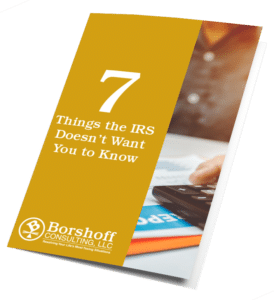Standing out in a crowded market is the goal of every growing business in competitive industries.
Yet, a competitive edge doesn’t happen overnight. Developing competitive strategies is what sets successful companies apart from the rest. Dominating an industry, attracting new customers, and positioning the company in the market requires a detailed plan of action that takes an honest look at the corporation and its competition.
Businesses can compete with each other in different ways. The tactic you choose depends on the business’ values, capabilities, and resources. What is essential, nevertheless, is choosing a strategy in the first place.
The Key to Developing a Competitive Strategy for Your Business
A sustainable competitive advantage is gained or lost by how well a business can do its number one job: give value to the customer.
Customers are your most valuable asset. Achieving market domination ultimately means serving your customer base through your strategy.
You serve your customer not just through your product or service but through your “unique selling point” that differentiates you from your competitors. This helps customers know who you are and what you represent among all the other companies in the niche. A few ways to differentiate are explored in the next section.
Leveraging your distinctiveness in your industry is more than a marketing tactic. It’s a strategy to optimize and grow every facet of the business to give you that competitive edge in markets saturated with multiple players. All you need to do is choose a specific approach for your competitive strategy.
Focus vs. Leadership Strategies
Before you can choose a strategy, you need to know what strategies are available to you. There are at least four options, according to Michael Porter, a professor at Harvard Business School, who is known for defining four competitive business strategies. Porter divides the four types into two categories: focus and leadership.
With a focused approach, a business will target narrow segments of customers in its marketing plan and service offerings. Instead of trying to be the best overall, a focus-minded business develops an advantage over only a few other businesses. There are two types of focus strategies:
- In a differentiation focus, a company positions itself in a niche market because they have a unique feature that competitors lack.
- Alternatively, a cost focus increases customer support because something about the product or service lowers the cost compared to the rest of the niche.
Opposite the focused approach is a leadership approach to competitive strategy. A business with a leadership aim seeks to dominate the whole industry landscape. This organization type has some reason to stand out in the broad marketplace of competitors. Just like with the focused approach, there are two types of competitive models.
- Differentiation leadership centers on something about the company being distinct in the marketplace, generating greater interest and often higher prices.
- Conversely, a cost leadership strategy competes by mass-producing the product so that it is generally cheaper than competitors.
These four types are not an exhaustive list of every way to differentiate, yet they do nicely sum up the major options for effectively competing in a market with other corporations.
How to Choose a Competitive Business Strategy?
Any of the above four strategies could benefit a business’s growth goals. It is up to you to decide what works best for your business. Using any of the four competitive strategy types can bring success–if you consider what’s missing in your industry and what your customers need.
Firstly, take stock of your industry. In order to be competitive, you have to know what the competition is up to! You need to understand the players on the field and the opportunities that exist. Such a market evaluation is an ongoing task. You can ask these questions to help you analyze the industry:
- What features come standard in my industry?
- What are the average prices in the marketplace?
- What do we do better than all our competitors?
- What “gaps” exist in the industry that need addressing?
- Where is the market headed in the future?
Secondly, pay attention to the customer. Whether your strategy is based on cost or a niche feature, it all comes back to the customer. Put yourself in their shoes. You might ask yourself these questions about your customers to get thinking about an ideal strategy:
- Why would a customer choose my product over another product?
- What do we offer the customer that no one else has?
- How is my price in comparison to others?
- What features are commonly praised by customers?
- What features are commonly requested by customers?
The above questions might reveal missed opportunities or differentiation that you just need to lean more into. Discuss them with your team and forge a path forward.
However, all the questions should be filtered through practical considerations of the management, costs, technology, and resources needed to change directions. For instance, you can’t beat your competitors using a cost focus if you don’t have the technology to make your product cheaper. If you decide that’s the ideal strategy, you can certainly invest in accomplishing what you currently lack.
How to Implement a Competitive Strategy for Your Business
A competitive strategy only works if you implement it.
Like any effective business plan, your competitive strategy must take into account various factors. After your strategy is chosen, every other component of business is affected–from finances to marketing to operations. It may help to rewrite your business plan or map out how your new priority impacts other aspects of the company.
As an example, a differentiation leadership strategy means your marketing efforts likely present your product as luxurious or high-quality. Financial and manufacturing resources will then be allocated to differentiate the product among the playing field because of its superior features.
Your preferred strategy, whether it’s cost leadership or a differentiation focus, should guide your business in making big decisions. The strategy is the end goal, so the business leader must make choices that best lead in that direction.
Conclusion
Gaining the best competitive strategies in your business requires a plan put into action. You may decide to follow one of Porter’s four strategies, or you might use your own. With a plan, you can dominate the market, build a solid reputation, and grow revenue.
A sustainable competitive advantage benefits everything you do in the business. Achieving this, however, takes dedication. If you know what you desire in the end, you will make decisions that will take the business to a whole new level.
Need help with your competitive business strategies? Would you like a free business consultation? Reach out to Borshoff Consulting! You can trust Indiana’s tax expert!





